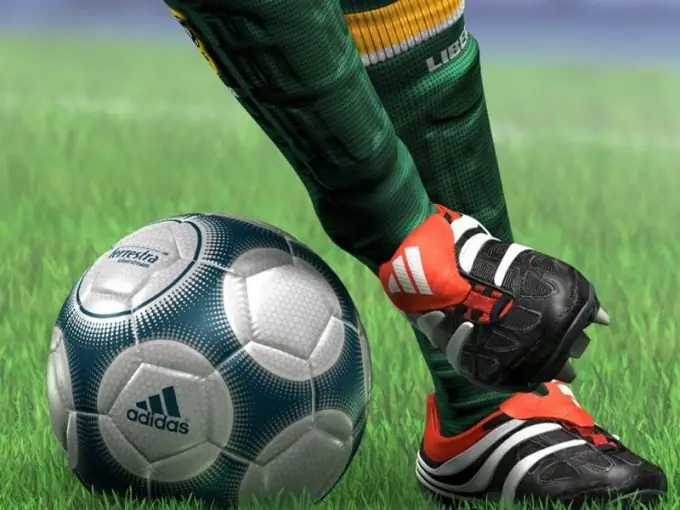Three things can get in the way of learning to draw: lack of time and perseverance, and fear of failure. But if you are determined to achieve what you want, the main thing is to properly motivate yourself and find a couple of hours for daily training. After them, it will not be difficult to draw a football player with a pencil.

It is necessary
- - drawing paper;
- - a simple pencil;
- - colour pencils;
- - soft cloth or paper for shading (napkin);
- - eraser;
- - sharpener or stationery knife;
- - the original image;
- - tracing paper.
Instructions
Step 1
Explore the photos and videos of the footballers. Pay attention to their movements, muscle tension, facial expressions. Select the format of the desired image. You can portray a football player in full height, up to a torso or a portrait. You also need to decide on the pose in which you want to draw it. He can hit the ball or run, stand statically, sit on the field, etc.
Step 2
Determine the nature and tension of the moment. This must be conveyed through the movements of a football player, facial expressions, muscle tension. If you capture him during the game, make it clear whether the team wins or not, in a fighting mood or relaxed. With all these intangible moments, and not just defining accessories, a professional footballer differs from an ordinary person in a sports uniform with a ball.
Step 3
Practice sketching people in motion. At the same time, easily move the pencil across the paper, leaving indistinct strokes. Draw a brighter line around the highlights. Don't try to sketch out clothes right away. First, carefully disassemble the player "in parts". If there is an original image, take a good look at how folds, shadows lie, and whether the clothing repeats the relief of the athlete's muscles.
Step 4
Focus on the outside of the footballer. Trace the football player with a simple pencil along the outer lines (you can use tracing paper so as not to spoil the image). Try transferring them to paper. In this case, the drawing will not look like a clear display of details, but remotely resemble flowed patterns of paint. Do not press hard on the pencil. As in the previous exercise, use light shading. After copying, trace the resulting image with a clear line. Copying is very useful in the learning process, this is how famous artists learned to draw.
Step 5
Add the necessary details to the resulting image. Compare your drawing and your photo (picture) all the time. Pay close attention to the location of the shadows, depict the muscles, add the necessary details. Draw a face if you can see it (at the very beginning of the tutorial, try drawing a football player with his back to you - this will make it easier to concentrate on the body and muscles).
Step 6
In place of the shadows, add a few strokes with a simple pencil, from dark to light. If the transition is too bright and noticeable, use a soft cloth or paper to create a blur effect (you can use your finger if you are not afraid to get dirty).
Step 7
When the graphics are complete, add some brightness with colored pencils. To keep the strokes from being pronounced and conspicuous, use the above technique. To do this, remove the shavings from the colored lead using a clerical knife. Rub it with a cloth or paper. This method is very suitable for dyeing leather. Make the player's uniform brighter. To do this, select the necessary colors, take a pencil. Lightly paint over the surface with light circular motions. If you want a richer shade, press harder on the pencil. Blend the colored surface with a soft cloth or paper.






